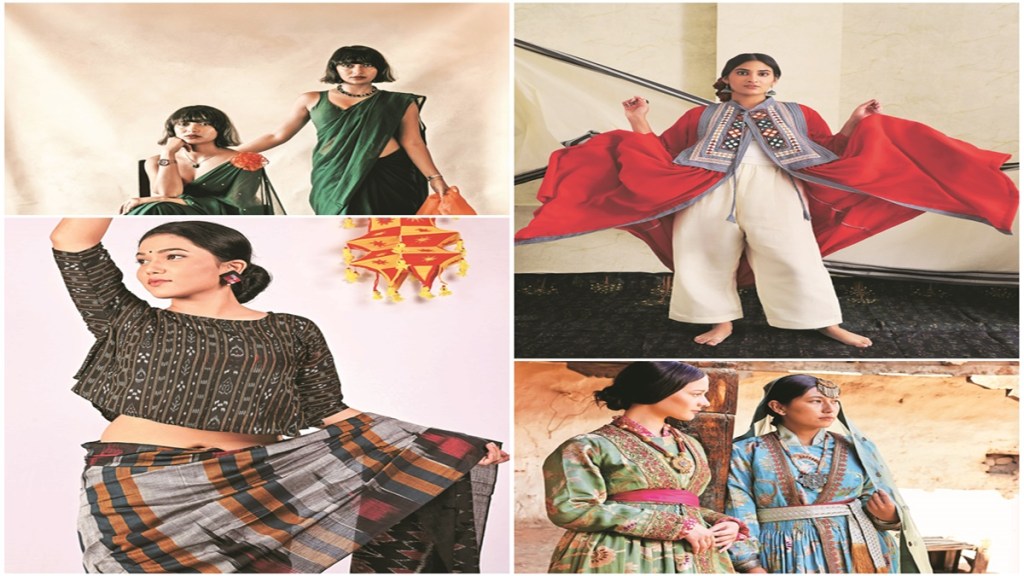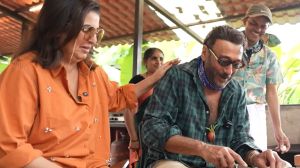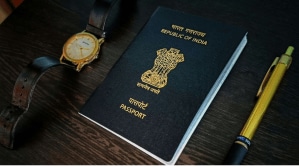Looms of the Lambanis
Banjara Kasuti’s red georgette thread-embroidered cape set is a brilliant example of how traditional wear can be infused with innovation. The cape has collar and piping in printed crape silk styled to tailor fit with contemporary design elements. It is a modern-day interpretation of how a traditional skirt, known as petiya, blouse called kachali, complete with mirror patch embellishments, and sleeves called chatiya, which weighs over 5 kg as it is adorned with coins, mirrors, and shells, can be reproduced into a lightweight modern-day attire.
The cape, which takes over seven days to process, differs from the traditional attire in design, purpose and construction. The traditional attire includes specific elements like mirror patches and extensive embellishments, whereas the cape focuses on sleek piping in fabric to give it a contemporary look.
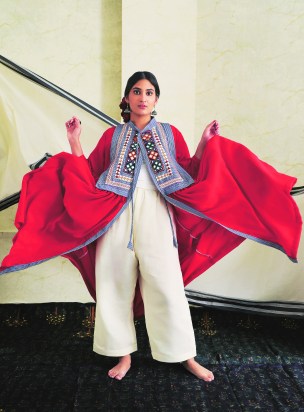
Founded in 2017, Banjara Kasuti has been preserving the clothing traditions of the Lambanis, a traditionally nomadic community, in the Vijayapura region of Karnataka. Started by Asha Patil and Seema Kishore, the social enterprise inculcates their heritage into modern-day clothing and supports the community and weavers with its line of handcrafted embroidery and accessories.
From Ladakh, with love
Namza Couture’s cool matcha and lagoon blue mogo (a type of traditional Ladakhi kurta) is an epitome of luxury. Crafted from the finest silk, the dress is adorned with intricate handwork along the border, symbolising the lotus flower that is synonymous with purity and grace.
The outfit reminds of a similar one worn by actor Sonam Kapoor Ahuja at the pre-wedding festivities of billionaire industrialist Mukesh Ambani’s son Anant Ambani and Radhika Merchant last year. The outfit paid tribute to the region’s unique textiles, made possible by Namza Couture, a brand established in 2016 by Padma Yangchan and Jigmet Disket.
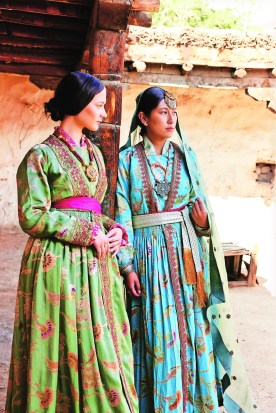
Both Yangchan and Disket collaborate with artisans to preserve centuries-old craftsmanship, where each garment represents over 350 hours of meticulous handcrafting. “Initially, Ladakh sourced silk from Yarkhand through traders on the Silk Route, valued for its vibrant colours and intricate gold thread weaving. However, as the Silk Route declined, Ladakh shifted to locally woven woollens. With time, Ladakh opened up to the wider Indian market, where polyester fabrics became popular due to their affordability and convenience, leading to a decline in traditional textile richness. This resulted in a subdued colour palette dominated by maroon, white, and black,” says Yangchan.
“Our mission is to revive these traditions by integrating contemporary colour trends and luxurious fabrics, collaborating with local artisans and preserving traditional garment silhouettes with slight modifications for better fit,” adds Yangchan.
Namza is igniting a cultural renaissance, especially among the younger generation, one timeless piece at a time.
New patterns on pret-a-porter
Among the Indian textiles which have a fascinating history across different states in India is Ikat, an age-old dyeing technique of Odisha that has exemplified the fusion of tradition and innovation. The Ikat pattern ranges from simple symmetrical to large geometric patterns and abstract zoomorphics. It is the resist dyeing technique on the yarn that is now being adapted into a range of smart casual everyday wear like jackets, tops, and scarves.
The GI-tagged Ikat is a popular skill among the weaver community of Odisha, who adopts this technique to fit the contemporary vocabulary of today’s fashion world.
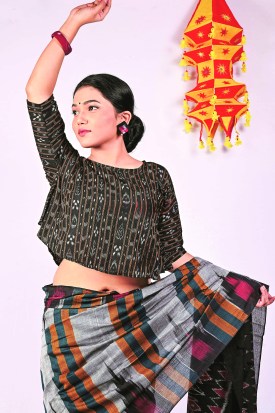
Retailers like Utkalamrita work with Ikat weavers in Nuapatna village in Cuttack, and have mastered the traditional to modern format. They pick up the fabric, design and create a range of sarees, blouses, jackets, skirts and tops to give them a modern spin.
Weavers are also being experimental by calculating the thread arrangement according to the fabric’s density, which allows the desired pattern for new designs, increasing pliability and giving the fabric a smooth and shiny texture.
Sarees and sustainability
For sister duo Sujata and Taniya Biswas, who launched their fashion label Suta in 2016, every plant seed is a mystery. “You never know what miracles they may unfold. All they need is to be seen and to be loved. In return they yield beautiful flowers and fruits and give us cozy breezy hugs,” says Taniya Biswas. Synonymous with this idea, the lifestyle brand sees immense potential in every inch of yarn and every small piece of fabric. “It could be just another piece of orange fabric for some; but we drape these fabrics as marigolds,” she adds.
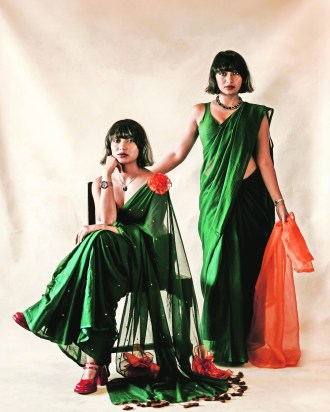
Suta’s green, plain mul cotton saree adds intricate hand stitched chumki/ sequins and multiple handmade organza marigold flowers, metamorphosing into genda kusum flowers. Suta repurposes unused fabric yardages into beautiful khesh sarees, cutting the fabrics into strips and using them in the form of weft. This adds beautiful contrast lines to the age-old traditional yarn saree bringing more value as well as an efficient way to upcycle the leftover fabric.
